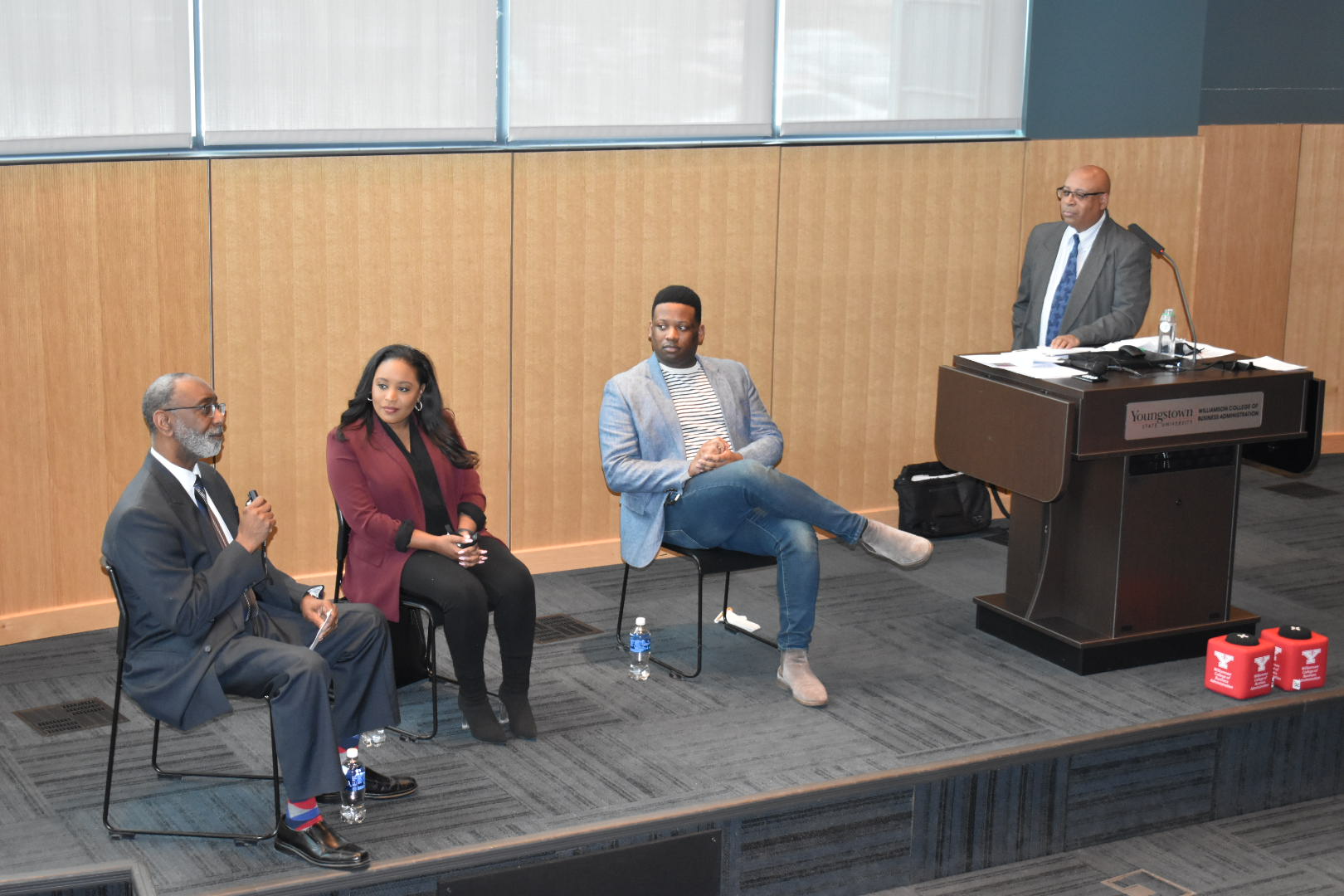By C. Aileen Blaine
In a panel discussion held last Thursday, titled “Obstacles and Opportunities: The Future of Black Media,” three local journalists shared their insights, perspectives and experiences as Black journalists working in the Mahoning Valley.
Ernie Brown, retired regional editor at The Vindicator; Aaron Dean, anchor at WYTV; and Malaynia Spiva, reporter for WFMJ, served on the panel. Hosted by Youngstown Press Club, the discussion’s main focus was put in a local context, and it highlighted issues such as racism and lack of diversity that occur in newsrooms across the nation.
George Nelson, president of Youngstown Press Club and an assignment editor at The Business Journal, opened the conference at the Williamson Auditorium at Youngstown State University.
“As media outlets — and as a society as a whole — we continue to grapple with racism and its horrific legacy,” Nelson said. “Every George Floyd — every Ahmaud Arbery — serves as a fresh reminder of the centuries of injustice inflicted on Black Americans.”
Arthur Byrd, press club member and former photojournalist for WFMJ, served as panel moderator, asking questions focussing on issues the journalists have experienced in their careers and issues they’ve encountered in the industry itself.
Each panelist said they’ve witnessed a severe lack of minority representation in the newsrooms they’ve worked in.
“In my experience in newsrooms — I’m on my third newsroom right now — I’ve always been in the minority,” Dean said. “I’ve never really experienced a diverse newsroom. … You have to have a diverse group of people in charge.”
As a young girl, Spiva said there weren’t many Black female role models to look up to in the news industry. She’s chosen to stay in the Mahoning Valley so she can serve as a potential exemplar for the next generation of girls.
“I’m from here, and I didn’t get to see a lot of Black women on my TV screen,” she said. “It’s important for young Black girls to see Malaynia Spiva on their screen. I know it’s a cliche, but representation does matter.”
According to data collected by Pew Research Center, while there are over 100 Black newspapers in the United States, only The St. Louis American has a circulation of over 50,000.
In the newsroom, only 7% of employees and 6% of news directors are Black, presenting a disparity in minority representation.
“It’s important to really make sure that your newsrooms are diverse, that they reflect your community and then some,” Dean said.
Another point of discussion centered on the decrease in opportunities for journalists as the diminishing print market shrinks.
“If you lessen the opportunities, you lessen the chance that more and more Black people are going to get involved in those opportunities,” Brown said. “Most of the people making the decisions are not Black. Therefore, they’re going to be looking at people that look like them within those particular positions and make their decisions.”
Combined with the shift from print publications to exclusively digital content, the future of the traditional newspaper is seeing a major adjustment. Not all print publications transition to an online format, leaving many to die out completely.
“There are a lot of counties throughout this country where there’s no local newspaper, there’s no local coverage. There’s no one to hold accountable politicians,” Brown said. “[Some politicians] do what they do when there’s nobody to challenge them.”
Brown stressed the importance of the local press’s duty to serve as the voice of the people in a given area.
“We challenge the powers that be to make sure they are representing ‘We, the people,’” Brown said.
